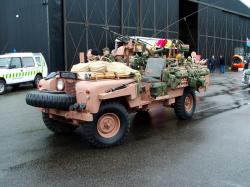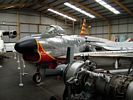Translate this Page
Anniversaries for today :
Welcome to Clash of Steel!
[ About us ]
[ Contribute a battle ]
[ Contribute a review ]
[ Contribute a reenactment group ]
[ Contact us ]
Featured battle : Zadar
Part of The French Revolutionary and Napoleonic Wars
Date : 22 November 1813 - 06 December 1813
The Austrians were mopping up strong points, ports and islands, on the Adriatic assisted by warships of the British Royal Navy. In this instance there was a battalion of Liccaners on each side. Those on the French side attempted to revolt and after 80 were shot the remainder were expelled from the fort. The French captives were returned to France under licence.
Featured image :
McDonnell F-101-B Voodoo 6-0312

Another iconic 1960's US fighter/interceptor which served with distinction in the photo-reconnaisance role into the 1980's. This example is painted in the 60th Fighter Interceptor Squadron USAF.
Gallery updated : 2022-04-04 08:33:43
Featured review :
Armoured Warfare in the British Army 1914-1939
Dick Taylor
The fly leaf note calls this book a tour de force and so it is. It very thoroughly covers the very beginning of British armoured vehicles through to 1939. The first fumbling attempts towards mechanized warfare gave Britain world leader status by the end of the First World war. The internal politics of the army plus the financial constraints of the depression lost us that leadership by the start of the Second World war. Naturally there is a lot about the use and misuse of the first tanks and some dramatic description of conditions inside them. This book ranges from battlefield heroism to Whitehall shenanigans and tells both stories well.
There are a lot of photographs scattered through the book, the appendices are a mini reference book in themselves and the bibliography is extensive.
This is the first of a three volume work and the next volume cannot come too soon. We very highly recommend it
Pen & Sword Military, 2022
Reviewed : 2022-04-12 10:30:14






